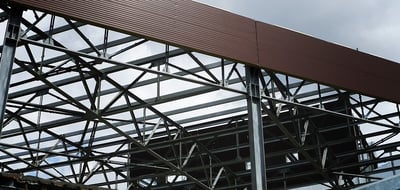
Every contracting company out there shares one common goal: Jobs completed successfully. While most contractors do quality work consistently (otherwise, they wouldn’t be contractors!), there are a few things that can set you above the competition—especially when you’re bidding on jobs involving commercial construction.
Even details like the tools that your workers rely on can make a difference. Products from BECK’s ET&F® lineup, like the TRIMFAST® Heavy Duty Model 210TA or the Steel Framing Model 500A System, can ensure that work proceeds faster and that the finished product is of higher quality. But tools are just one thing that can help ensure your contracting company’s success. We’ll discuss a few other tips below.
1. Get in on Jobs Early
Most commercial construction projects go through six phases: Planning, design, pre-construction, procurement, construction, and post-construction. The builder, general contractor, or stakeholder overseeing the project often brings in the subcontractors during the procurement and construction stages.
However, if you’ve built a great working relationship with a particular builder, it’s possible to get in on these projects sooner than that. The advantage? While you obviously won’t be able to do work on the ground before the construction phase starts, the advanced notice means that you can start placing supply orders for materials you know that you’ll need, and you can start planning your schedule. The sooner you can start these things, the smoother the project will go.
2. Look for Ways to Cut On-Site Construction Time
As mentioned above, tools that are ideal for the task at hand are one way to make work on the job site more efficient—and thus make your business more successful. But another thing you can do to minimize time on a build is to complete as much as possible at your headquarters.
As an example, if you specialize in custom millwork for trim or other necessities, then you can mill the trim at your headquarters before arrival on the job site so that materials are ready to go ahead of time. All that your workers will need to do once they’ve arrived is cut, fit, and hang the pre-milled lumber. Another example would be contractors responsible for building and installing roofing trusses. Often, these can be built offsite, then shipped to the site for installation.
3. Communicate Well and Ask Plenty of Questions
Forecasting delays in materials orders or another potential issue? Make sure to communicate these things to the other parties involved. Be open about timeframes and anything that may need to be provided for your company to do its portion of the job. Good communication lets everyone involved with a project plan accurately, which minimizes the risk of delays or potential problems.
It's always smart to ask plenty of questions not only at the outset of a job but throughout the process as well. Check with the general contractor to make sure that you’re working with the most recent set of blueprints. Check in regularly to ask if there are any changes to the project that you may not have been notified about. Ideally, you’ll always get the information you need as you need it—but sometimes disorganization among multiple parties means it’s wise to ask these questions rather than finding out about those changes after you’ve already started work on the original plan.
Choosing Tools that Can Make Your Company More Successful
Efficiency and consistent quality are two key components of success—and ET&F® Systems (a BECK member) can help you achieve both. You need a fastener system that not only gives you dependable tools to install fasteners quickly, but also one that uses a quality fastener made for the specific type of work that you do.
The ET&F® System delivers a variety of tools to suit many different jobs—like nailers made specifically for installing trim, steel framing, manufactured wall panels, or concrete work. Select from this line of tools to find the fastener system ideal for the type of contracting work your company handles.
.svg.png)

